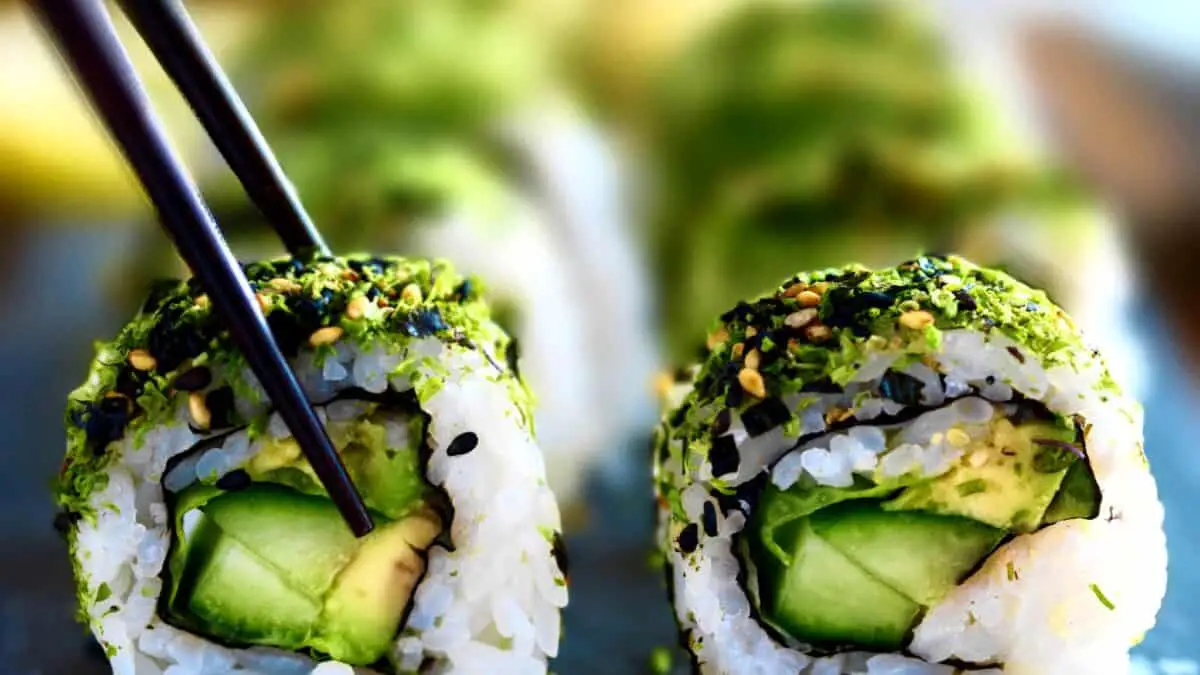Is Sushi Low Fodmap? Read This Before Eating Sushi With IBS
Sushi is a delicious, traditional Japanese dish and a favorite of many. But, if you have irritable bowel syndrome (IBS), you may wonder if sushi is low FODMAP and safe to eat.
FODMAPs are short-chain carbohydrates that can be difficult to digest and trigger symptoms in those with IBS.
Therefore, it’s important to understand which sushi varieties are low FODMAP and which might be problematic.
In this article, we’ll discuss which types of sushi are safe to eat if you have IBS, as well as tips for choosing low FODMAP sushi and managing IBS symptoms.

With the right information, you can enjoy delicious sushi without triggering your IBS symptoms.

Check out our new cookbook
Bitemybun's family recipes with complete meal planner and recipe guide.
Try it out for free with Kindle Unlimited:
Read for freeIn this post we'll cover:
Types of sushi and FODMAPs content
Sushi is usually made with rice, fish, or seaweed. The fish used in sushi can vary, but the most common types are salmon, tuna, and mackerel.
Some sushi varieties also contain eggs and/or soy sauce.
Rice and fish are low FODMAP, so they are safe to eat if you have IBS. However, if you have an allergy or intolerance to soy or eggs, you’ll need to avoid most sushi.
Seaweed is also low FODMAP so sushi rolls are often fine too.
Sushi can be served in many ways, including nigiri, maki, sashimi, temaki, and inari. Each of these forms of sushi has a different FODMAP content, so it’s essential to know which types you can safely eat.
What sushi is low FODMAP?
The best sushi choices for those with IBS are nigiri and maki. They are the simplest of sushi (if you choose the simple thin maki with one ingredient).
Nigiri is a small slice of fish served on a bed of rice. Maki is a sushi roll wrapped in seaweed. Both types of sushi are low FODMAP, but check for any added ingredients like soy sauce that may be problematic for you.
Soy sauce is not FODMAP free, but it is low FODmap. So dipping your sushi in soy sauce is fine for most. Only not for those with a gluten allergy. But avoid using too much soy sauce.
Avoid exotic sushi rolls because they often contain sweet sauces like teriyaki.
Also, try to stay clear of sushi with avocado. A few bites might be ok, but combining it with soy sauce and eating more than a little might cause problems.
Most of the traditional sushi rolls are fine, while Western creations are often off the table, like avocado, rich sauces, and lots of toppings.
Tips for choosing low FODMAP sushi
If you’re unsure whether a certain type of sushi is low FODMAP, check out a list of ingredients or ask a sushi chef.
If you have an allergy or intolerance to soy, double-check that you aren’t eating sushi made with soy sauce and ask if the sauce served on the side is Tamari and not soy sauce.
Tamari is gluten-free while soy sauce is not.
If you have an allergy or intolerance to eggs, double-check that the sushi isn’t made with a mayonnaise-based sauce.
Managing IBS symptoms when eating sushi
If you’re trying to manage your IBS symptoms when eating sushi, you may find it helpful to choose a small amount or share a portion with a friend.
You may also want to avoid eating sushi with a lot of rice. This is especially important if you have IBS-D, as rice is a common IBS-D trigger.
You may also want to avoid eating sushi that is fried or heavily seasoned, as it may be high in FODMAPs.
Conclusion
The best sushi choices for those with IBS are nigiri and maki. Both types of sushi are low FODMAP. With the right information, you can enjoy delicious sushi without triggering your IBS symptoms.
Also read: these are the healthiest sushi if you’re watching calories
Check out our new cookbook
Bitemybun's family recipes with complete meal planner and recipe guide.
Try it out for free with Kindle Unlimited:
Read for freeJoost Nusselder, the founder of Bite My Bun is a content marketer, dad and loves trying out new food with Japanese food at the heart of his passion, and together with his team he's been creating in-depth blog articles since 2016 to help loyal readers with recipes and cooking tips.
